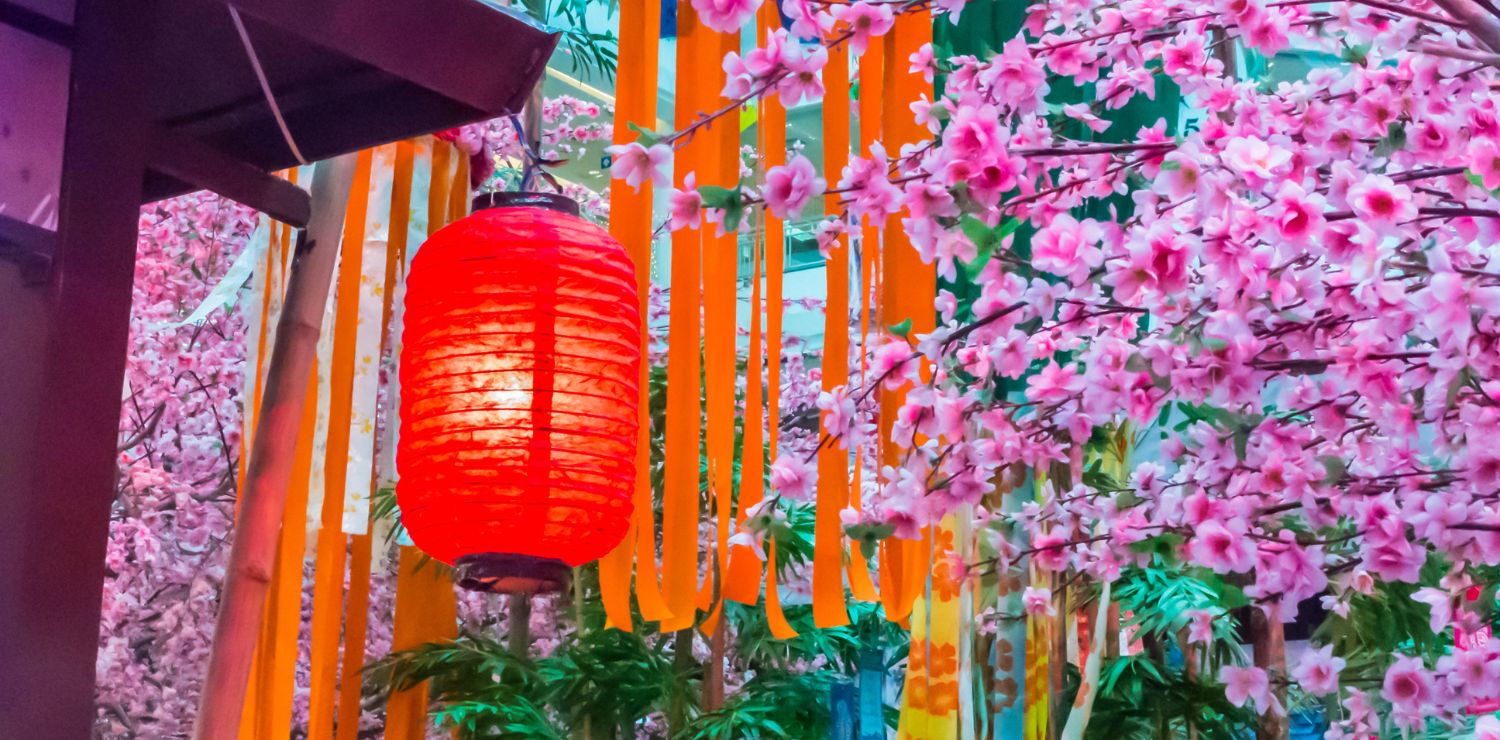The most famous traditions in Japan
Japan is a land where old and new blend harmoniously and ancient customs are still present while coexisting with current trends. Japanese traditions are deeply rooted in its history, culture, and spirituality. They play an essential role in the lives of the people of Japan. Through this article, we will study in detail some of the fascinating and iconic traditions of Japan.
Noh Theatre
Noh theatre is one of the oldest and most revered forms of theatre in Japan. Originating in the 14th century, Noh evolved from Shinto and Buddhist rituals, becoming a pillar of Japanese culture. Noh performances are defined by understated elegance, hypnotic music, and lavish costumes. The actors, who are often masked, use stylized gestures to tell a story drawn from Japanese mythology and classical literature. Noh theatre is primarily a visual spectacle, but also a spiritual experience, often associated with the philosophy of Zen Buddhism. Each Noh performance is meticulously planned, with careful attention paid to every detail, from the actors' movements to the musical structure.
The tea ceremony
The tea ceremony, or "chanoyu", is an elegant Japanese tradition that celebrates the preparation and serving of matcha green tea. This ancient practice dates back to the 9th century and is deeply rooted in Japanese principles of meditation and respect for nature. This ceremony takes place in a setting
The tea ceremony takes place in a classic setting called a "chashitsu," which is a small tea room designed to encourage tranquility and contemplation. Guests participate in every step of the tea preparation process, from cleaning the utensils to the final tasting, with total respect for harmony and simplicity. The tea ceremony is much more than just a drink; it represents the Japanese values of hospitality, modesty, and gratitude towards nature.
Matsuri Festivals
Matsuri festivals are some of the most colorful and lively events in Japan. These joyous celebrations that take place throughout the year across the country represent various aspects of Japanese culture, from the seasons to the country's deities. Each region of Japan has its own unique festivals, which can include colorful parades, traditional dances, spectacular fireworks displays, and ritual offerings at temples and shrines. Some of the most famous festivals in Japan include the Gion Matsuri in Kyoto , the Tanabata Matsuri in Sendai, and the Awa Odori in Tokushima. These festivals are a chance for people to come together, celebrate, and strengthen bonds with each other. They are also a showcase of Japanese craftsmanship with stalls selling local products, crafts, and traditional foods.
The Art of Ikebana
Ikebana , or the Japanese art of flower arranging, is a decorative and aesthetic practice deeply rooted in Japanese culture. Like simple flower arrangements, ikebana emphasizes harmony, balance, and simplicity. Ikebana arrangements are designed to capture the natural beauty of the elements, using flowers, branches, and leaves to create elegant, clean, and unique compositions. Each ikebana arrangement is a unique artistic expression, reflecting the seasons, emotions, and feelings of the maker. Ikebana masters spend many years perfecting their craft, following aesthetic principles that have been passed down through generations. Ikebana is both a visual art form and a meditative practice that encourages contemplation and connection with nature.
The passing parties
Passage festivals, or "Shinjisai," are traditional ceremonies that mark important milestones in a person's life. These rituals, which date back centuries, symbolize the transition from one state to another and are performed with respect and reverence. For example, the Shichi-Go-San ceremony celebrates the growth of children at the ages of three, five, and seven, marking their passage through important and crucial stages of development. Similarly, Shūgi-Bukuro marks the beginning of adulthood at age twenty, with special rituals and family celebrations. Passage festivals provide an opportunity for families to come together, celebrate, and share moments of joy and reflection.
Conclusion
Japan’s traditions are a living testament to its rich cultural and spiritual heritage. They are not only preserved with pride, but also adapted and reinterpreted to meet contemporary needs and sensibilities. Whether through Noh theater, the tea ceremony, Matsuri festivals, ikebana, or passing festivals, Japanese traditions continue to inspire and amaze people around the world, testifying to the depth and beauty of Japanese culture.







Everything you need to know about bread knives
Kitchen Knife: The Guide - Kaitsuko